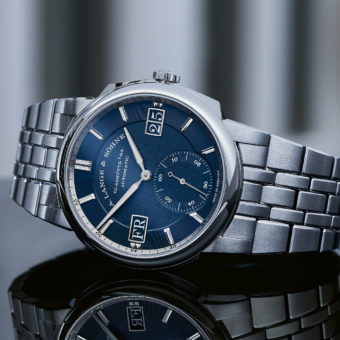While it consistently wows jewelry mavens with its ladies’ pieces and reliably satisfies racing enthusiasts with its annual Mille Miglia releases, Chopard saves its biggest feats of horological derring-do for exclusive models in its L.U.C collection, named for the initials of founder Louis-Ulysse Chopard. The high-complication headliner that the watch and jewelry purveyor launched at Baselworld 2019 impressed with both its technical complexity and decorative mastery. Here’s what you need to know about the new Chopard L.U.C Flying T Twin.
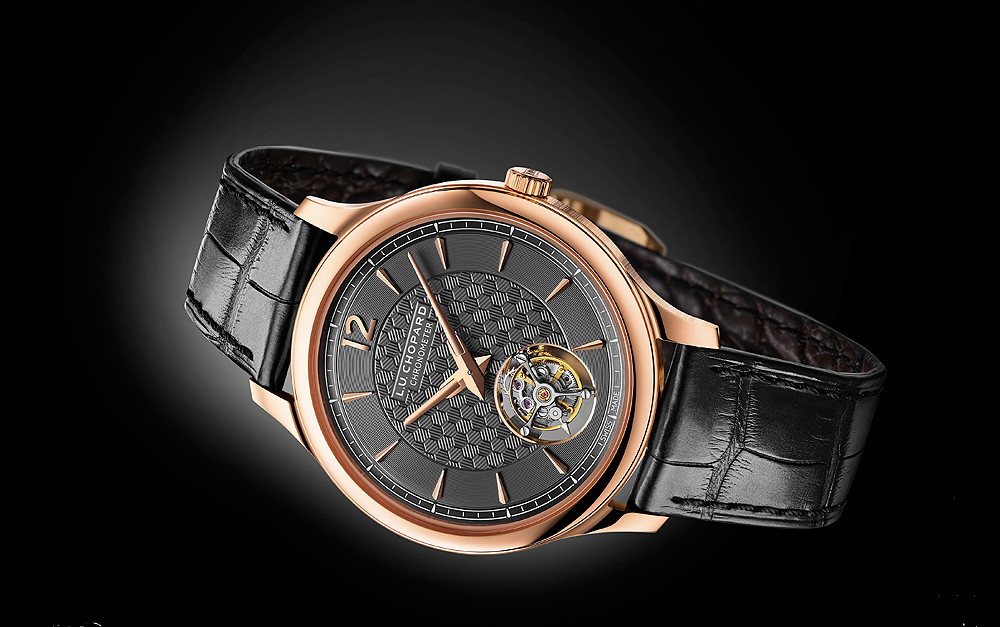
The Flying T Twin, as its name perhaps not so subtly suggests, contains the first flying tourbillon that Chopard has put into a timepiece, as well its first tourbillon watch of any type with an automatic movement. Newcomers to the brand may now be wondering what the “Twin” in the name refers to. It denotes the movement’s patented Twin Technology, in which two stacked mainspring barrels store for the watch a lengthy 65-hour power reserve.
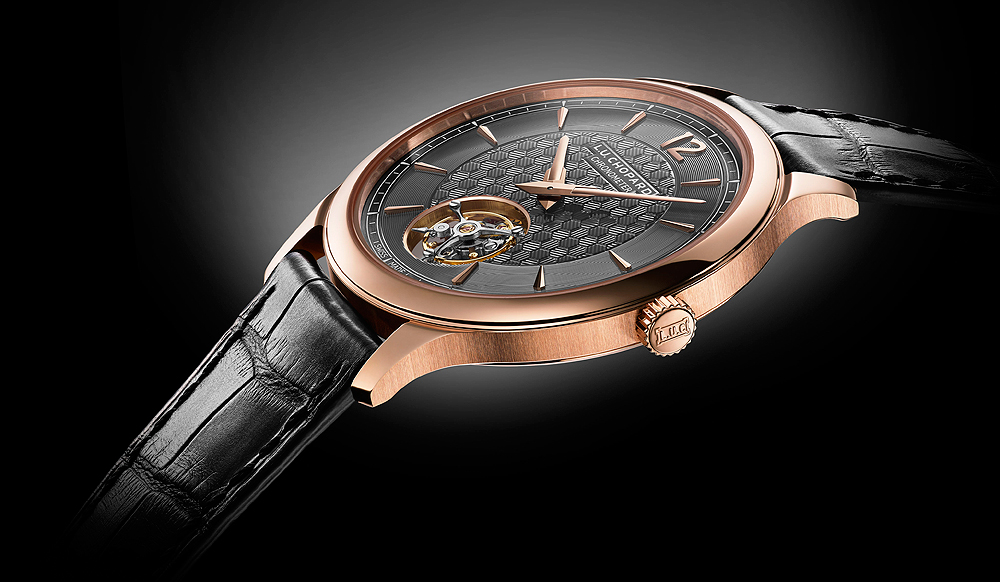
Developed and produced entirely in Chopard’s Swiss workshops, this new self-winding movement, Caliber 96.24-L is just 3.30 mm thick, allowing for a very slender 7.2 mm thickness for the 40-mm-diameter case, made of Chopard’s 18k “fairmined” white gold.
Visible through a sapphire caseback window, Caliber 96.24-L was developed specially for this watch. Wound by an engraved 22k gold micro-rotor that helps it maintain its slim profile, the movement also features a stop-seconds function (rare in a tourbillon watch) and boasts both a COSC chronometer certification and the coveted Geneva Hallmark — the latter partially achieved by array of decorations, including côtes de Genève on the bridges.
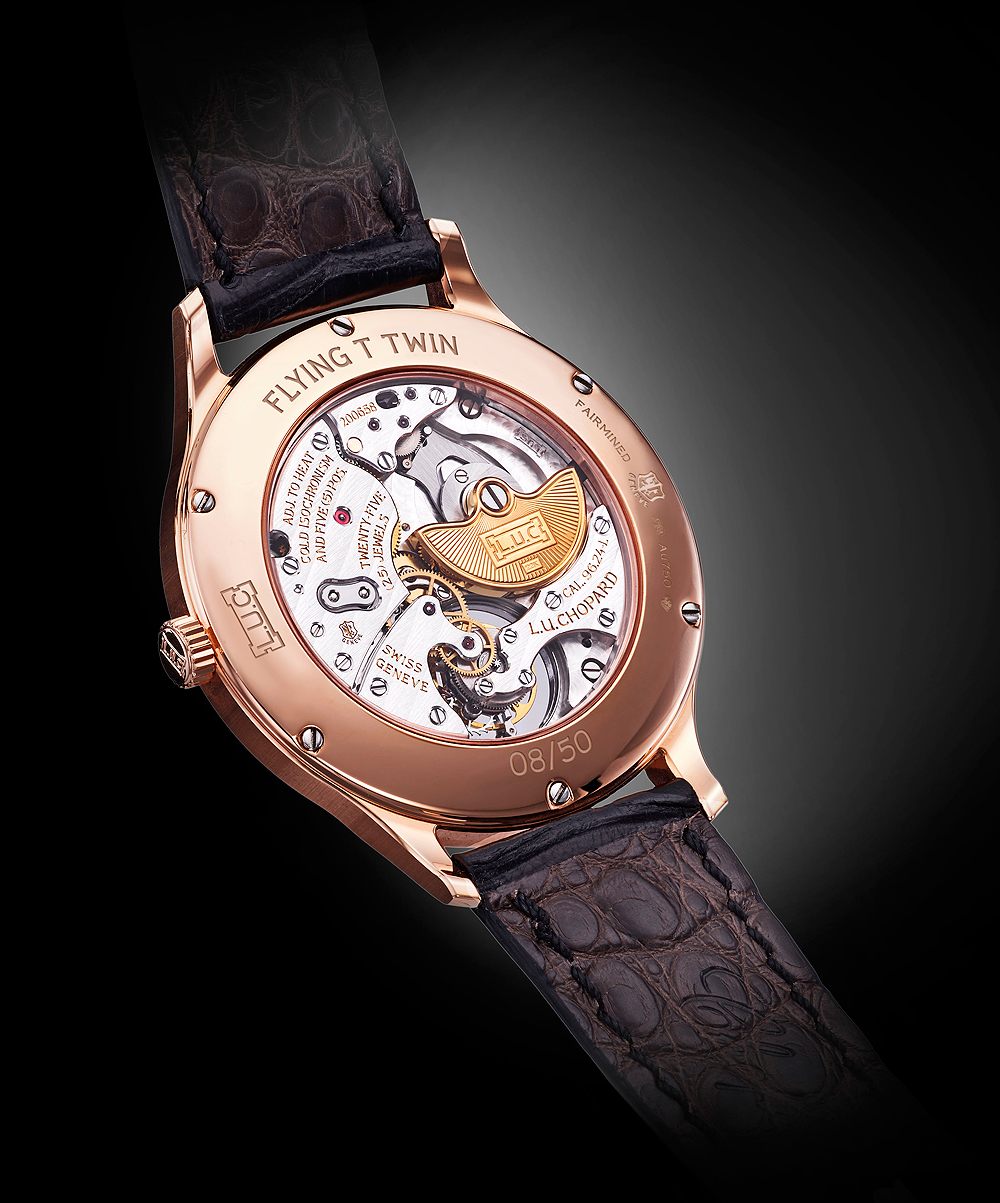
The cage for the flying tourbillon, which makes its balletic rotation once per minute at 6 o’clock, is not the only visual highlight on the dial. Made of solid gold with an anthracite gray ruthenium coating, the face of the L.U.C Flying T Twin is embellished with a honeycomb-style, hand-applied guilloché motif, which Chopard first used on the L.U.C XPS 1860 Officer edition released in 1970 as a stylistic nod to the first logo used by Louis-Ulysse Chopard. The Dauphine hands and hour markers are both made of rose gold, and a snailed pattern distinguishes the chapter ring around the main dial.
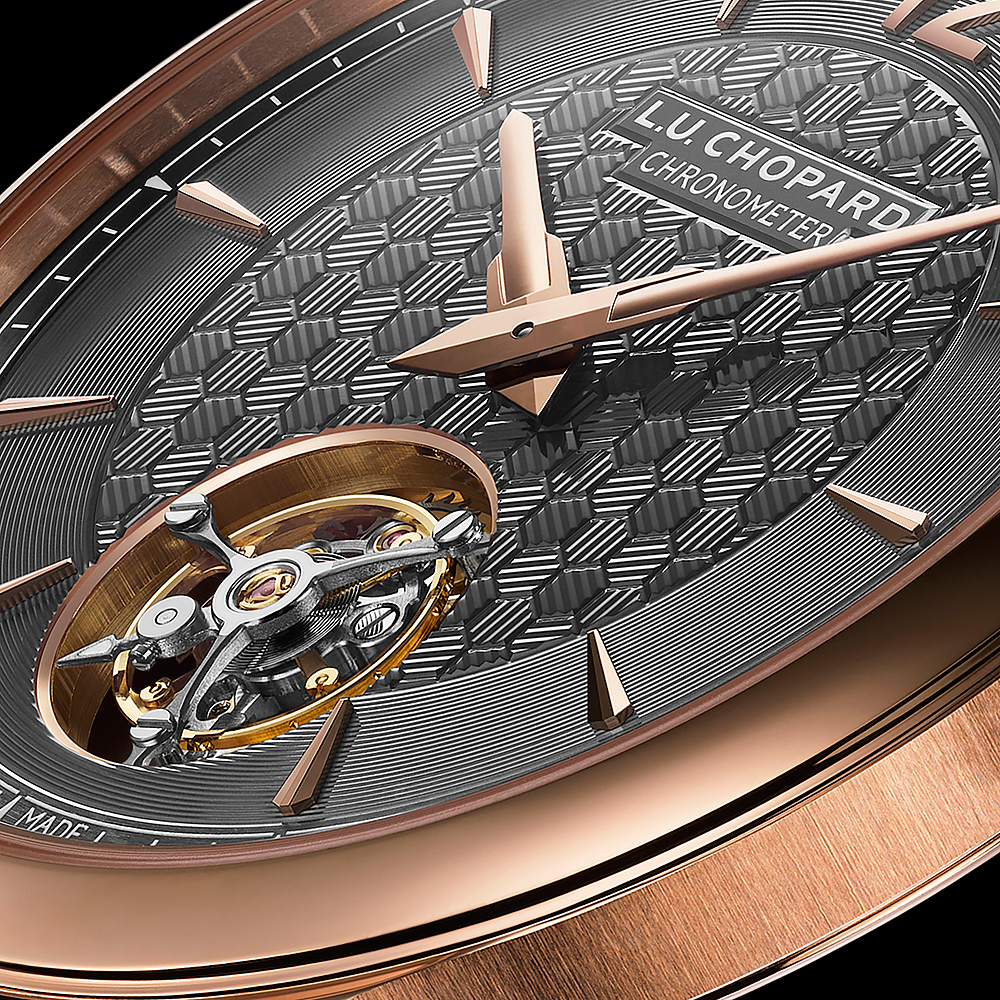
The case, as previously noted, is constructed from a block of what Chopard refers to as fairmined gold — described as “ethically certified” and “responsibly sourced from artisanal mining cooperatives, where both the environment and miners are treated correctly.” Chopard — the main global purchaser of this type of gold, which purchases it at a premium in order to reinvest in community project benefitting its suppliers — reserves its use for limited high-complication watches like this one as well as some of its most significant haute joaillerie models.
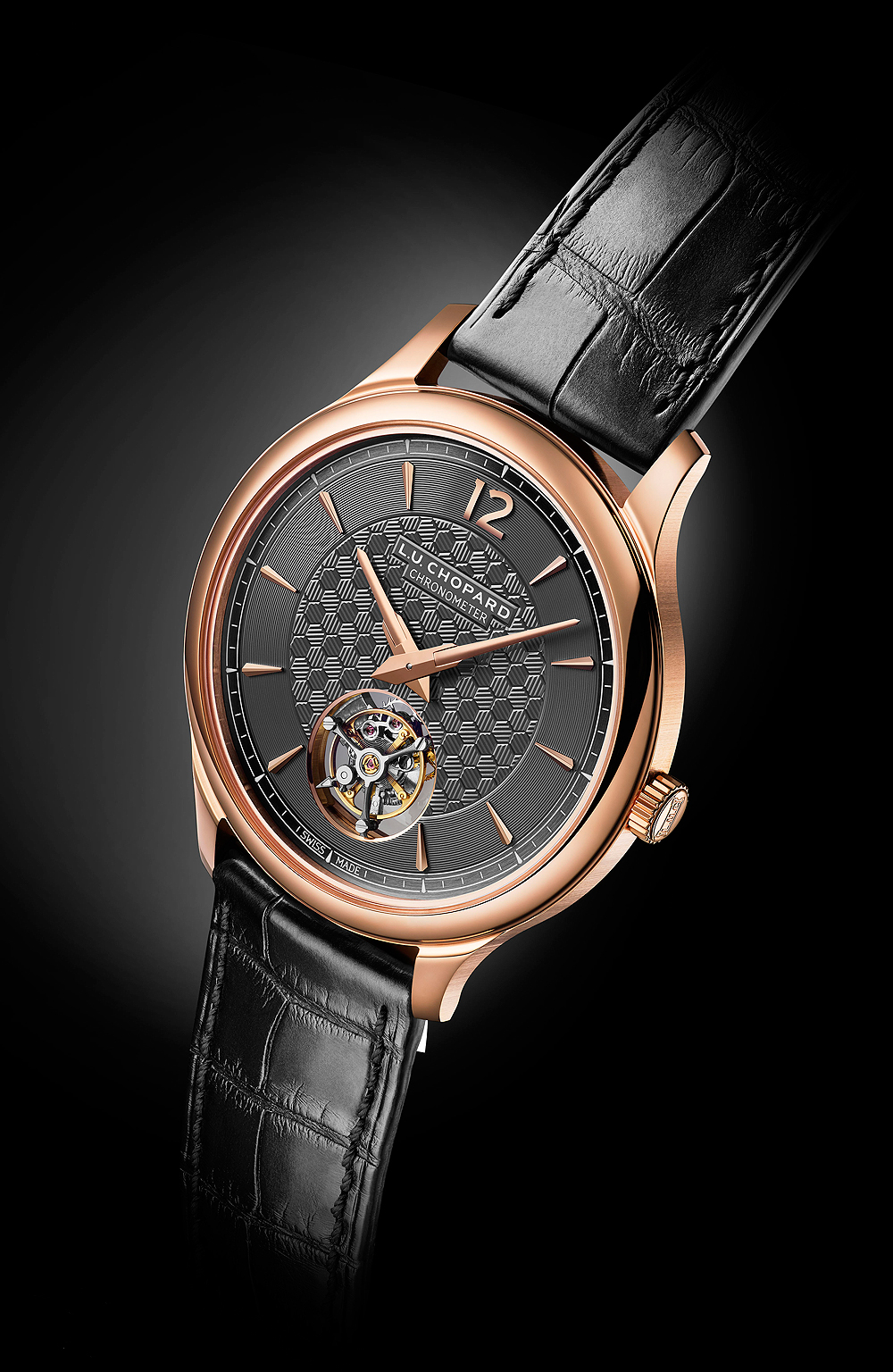
The Chopard L.U.C Flying T Twin is mounted on a hand-sewn, plant-dyed matte black alligator leather strap with cognac-colored lining and closes with an 18k rose gold pin buckle. Limited to just 50 pieces, it is priced at $118,500.




